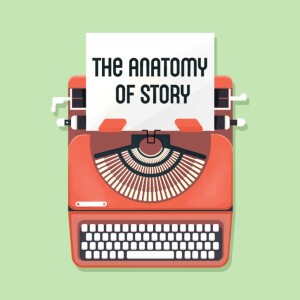
"The Anatomy of Story" by John Truby is a comprehensive guide to crafting powerful and engaging stories. Truby emphasizes the importance of character development and provides a step-by-step process for constructing solid story arcs.
The book begins by discussing the fundamentals of storytelling, including the premise, character desire, and conflict. Truby argues that a story's premise should be unique and compelling, while the main character's desire should be rooted in their deep, internal needs.
Truby then introduces the concept of the moral argument, which is the central theme or message of the story. He breaks down different types of moral arguments and provides examples to help writers develop their own.
Next, Truby delves into the principles of crafting strong characters. He emphasizes the importance of creating well-rounded, complex characters with strong goals and motivations. Truby provides tools and techniques for developing deep character backstories and explores the relationships between characters.
The book also delves into the importance of plot and structure. Truby breaks down the different elements of a story's structure, such as the inciting incident, rising action, climax, and resolution. He provides guidance on how to create compelling plotlines and how to effectively incorporate subplots.
Truby also explores the role of narrative techniques, such as suspense, irony, and pacing, in keeping readers engaged. He discusses the importance of foreshadowing, setting, and dialogue in creating a vivid and immersive story world.
In the final sections of the book, Truby tackles the revision process and offers advice on how to evaluate and improve a story's weaknesses. He provides tips for strengthening character arcs, clarifying plot points, and creating satisfying resolutions.
Overall, "The Anatomy of Story" is a highly detailed and insightful guide for aspiring writers. Truby's emphasis on character development, moral argument, and strong storytelling structure provides valuable tools and techniques for crafting compelling and impactful stories.
Chapter 2:the meaning of Full Book The Anatomy of StoryThe book "The Anatomy of Story" by John Truby is a comprehensive guide and analysis of the art of storytelling. Truby breaks down the structure and elements that make up a compelling narrative, exploring the fundamental principles and techniques used by successful storytellers.
The book delves into the various aspects of storytelling, including character development, plot construction, theme exploration, and the importance of a strong story concept. Truby emphasizes the significance of crafting well-rounded, believable characters with clear motivations and desires. He also focuses on the essential role of conflict in driving the plot forward and creating engaging and dynamic narratives.
Throughout the book, Truby provides numerous examples and case studies from popular films and literature to illustrate his points and theory. He analyzes classic stories and breaks them down to their core elements, providing readers with a deeper understanding of the mechanics of storytelling.
"The Anatomy of Story" also explores the concept of story structure, offering a unique perspective on how stories should be organized. Truby introduces his own model for story structure known as the "22 steps," which outline the key narrative beats and turning points that guide the plot progression.
Overall, the book serves as a comprehensive and practical guide for aspiring writers, filmmakers, and storytellers. It offers insights and techniques that can help craft more compelling and impactful stories, making it a valuable resource for anyone interested in the art of storytelling.
Chapter 3:Full Book The Anatomy of Story chaptersChapter 1: Story and Reality - This chapter introduces the concept of storytelling and discusses how stories help us make sense of the world.
Chapter 2: Characters - This chapter explores the key elements of creating compelling characters, including their desires, needs, and flaws.
Chapter 3: Desire - Truby delves into the importance of desire in driving a story forward and guides readers in creating strong and compelling character desires.
Chapter 4: Conflict - Here, the author explains the various types of conflict that can drive a story and provides techniques for creating meaningful and engaging conflicts.
Chapter 5: Structure - This chapter introduces the concept of story structure and explains the importance of a well-constructed beginning, middle, and end.
Chapter 6: Story World - Truby emphasizes the importance of creating a rich and believable story world, providing tips on how to build a compelling setting that enhances the story.
Chapter 7: Theme - In this chapter, Truby discusses how a story's theme can provide depth and resonance and offers guidance on developing a strong and meaningful theme.
Chapter 8: Moral Argument - Truby explores the moral argument that underlies a story and demonstrates how it can add depth and substance to the narrative.
Chapter 9: Story Beats - This chapter breaks down the key moments or beats that make up a story, from the inciting incident to the climax and resolution.
Chapter 10: Scene Weaving - Truby explains how to craft effective scenes that are not only engaging but also propel the story forward.
Chapter 11: Genres - Here, the author discusses the different genres and provides advice on how to navigate and use genre conventions effectively.
Chapter 12: Archetypes - Truby explores the concept of archetypes, or recurring character types, and explains how they can enhance the depth and resonance of a story.
Chapter 13: Miniplots - This chapter covers the use of subplots to add complexity and depth to a story, discussing how they can interweave with the main plot.
Chapter 14: Symbolism and Imagery - Truby discusses the use of symbolism and imagery in storytelling, explaining how they can add richness and depth to the narrative.
Chapter 15: Dialogue - Here, the author provides tips and techniques for crafting compelling dialogue that reveals character and advances the story.
Chapter 16: Story Improvement - This final chapter offers strategies for critically examining and improving a story, emphasizing the importance of revision and reworking.
Chapter 4: 10 Quotes From Full Book The Anatomy of Story- "A well-told story gives meaning to our lives, provides us with a clear moral compass, and helps us navigate the complexities of the human condition."
- "The key to successful storytelling lies in understanding the fundamental structure of a story, and how its various elements interact to create a powerful narrative."
- "Contrary to popular belief, a story is not just a series of events. It is an exploration of character, theme, and plot, all working in harmony to create a cohesive whole."
- "Character is the heart and soul of a story. Without compelling characters, a narrative falls flat and fails to resonate with audiences."
- "Every great story is built on a strong foundation of theme. Theme gives a story depth and resonance, allowing it to connect with readers on a deeper emotional level."
- "Conflict is the lifeblood of a story. Without conflict, there is no tension, no growth, and no compelling reason for readers to continue turning the pages."
- "Every character in a story should have a goal, a strong desire that drives their actions and propels the plot forward."
- "A story is only as good as its plot. The plot provides the structure and pacing necessary to keep readers engaged and invested in the narrative."
- "Effective storytelling requires the skillful use of both internal and external conflict. Internal conflict explores a character's inner struggles and flaws, while external conflict presents obstacles and challenges from the outside world."
- "The resolution of a story should provide a satisfying and meaningful conclusion, tying up loose ends and providing a sense of closure for both the characters and the readers."
More Episodes
 2024-07-17
2024-07-17
 21
21
 2024-07-16
2024-07-16
 17
17
 2024-07-13
2024-07-13
 16
16
 2024-07-12
2024-07-12
 13
13
 2024-07-12
2024-07-12
 8
8
Create your
podcast in
minutes
- Full-featured podcast site
- Unlimited storage and bandwidth
- Comprehensive podcast stats
- Distribute to Apple Podcasts, Spotify, and more
- Make money with your podcast
It is Free
- Privacy Policy
- Cookie Policy
- Terms of Use
- Consent Preferences
- Copyright © 2015-2024 Podbean.com






